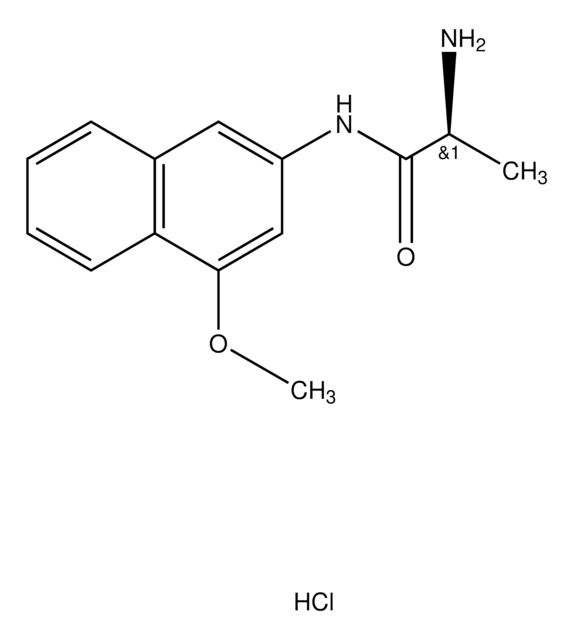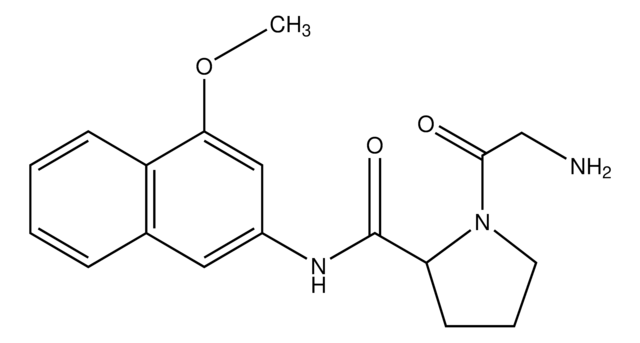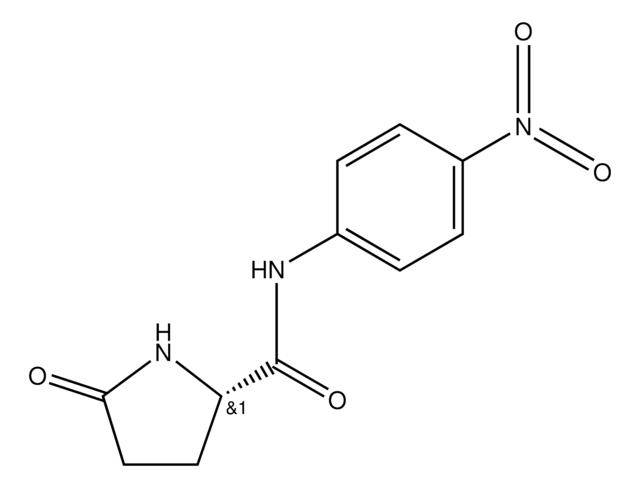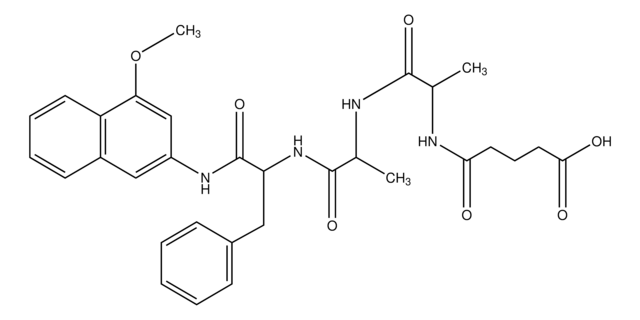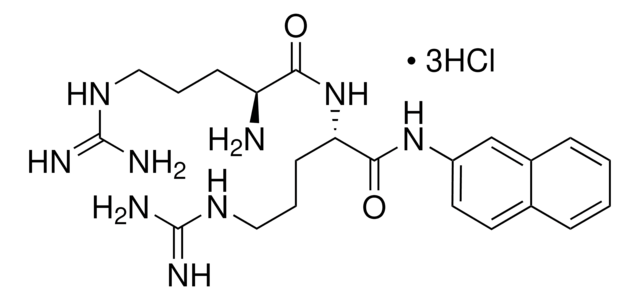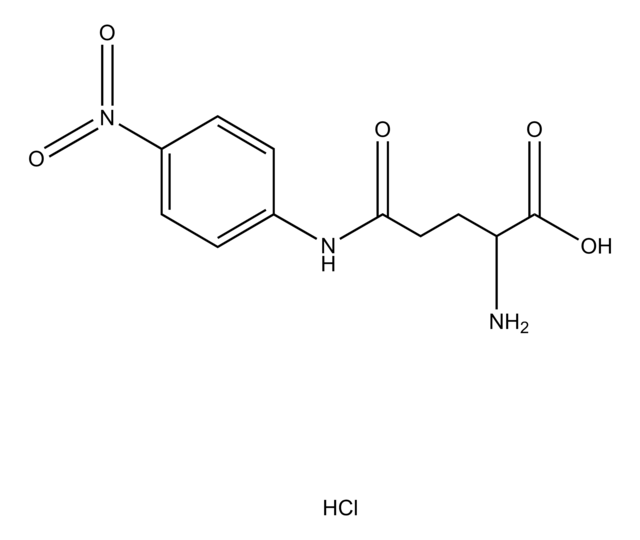G0141
L-Glutamic acid γ-(4-methoxy-β-naphthylamide)
≥98% (TLC), powder
About This Item
Polecane produkty
product name
L-Glutamic acid γ-(4-methoxy-β-naphthylamide),
Próba
≥98% (TLC)
Postać
powder
rozpuszczalność
1 N HCl: ethanol, 1:1: 25 mg/mL, clear, colorless to faintly yellow
temp. przechowywania
−20°C
ciąg SMILES
OC([C@@H](N)CCC(NC1=CC2=CC=CC=C2C(OC)=C1)=O)=O
InChI
1S/C16H18N2O4/c1-22-14-9-11(8-10-4-2-3-5-12(10)14)18-15(19)7-6-13(17)16(20)21/h2-5,8-9,13H,6-7,17H2,1H3,(H,18,19)(H,20,21)
Klucz InChI
DUNDTSUHZJULAX-UHFFFAOYSA-N
Szukasz podobnych produktów? Odwiedź Przewodnik dotyczący porównywania produktów
Powiązane kategorie
Zastosowanie
Działania biochem./fizjol.
Opakowanie
Hasło ostrzegawcze
Warning
Zwroty wskazujące rodzaj zagrożenia
Zwroty wskazujące środki ostrożności
Klasyfikacja zagrożeń
Carc. 2
Kod klasy składowania
11 - Combustible Solids
Klasa zagrożenia wodnego (WGK)
WGK 3
Temperatura zapłonu (°F)
Not applicable
Temperatura zapłonu (°C)
Not applicable
Środki ochrony indywidualnej
Eyeshields, Gloves, type P3 (EN 143) respirator cartridges
Certyfikaty analizy (CoA)
Poszukaj Certyfikaty analizy (CoA), wpisując numer partii/serii produktów. Numery serii i partii można znaleźć na etykiecie produktu po słowach „seria” lub „partia”.
Masz już ten produkt?
Dokumenty związane z niedawno zakupionymi produktami zostały zamieszczone w Bibliotece dokumentów.
Nasz zespół naukowców ma doświadczenie we wszystkich obszarach badań, w tym w naukach przyrodniczych, materiałoznawstwie, syntezie chemicznej, chromatografii, analityce i wielu innych dziedzinach.
Skontaktuj się z zespołem ds. pomocy technicznej